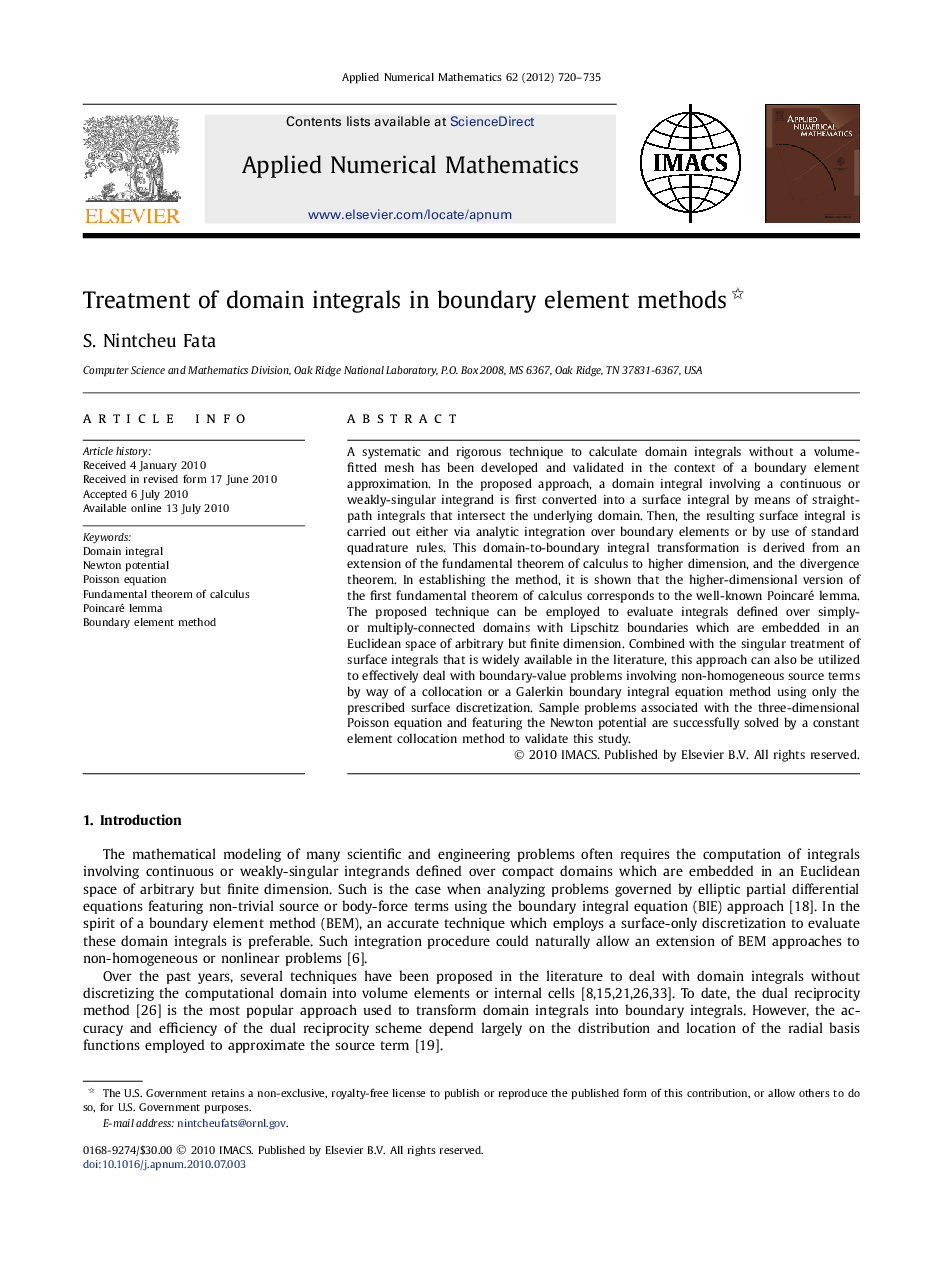| کد مقاله | کد نشریه | سال انتشار | مقاله انگلیسی | نسخه تمام متن |
|---|---|---|---|---|
| 6423233 | 1342036 | 2012 | 16 صفحه PDF | دانلود رایگان |

A systematic and rigorous technique to calculate domain integrals without a volume-fitted mesh has been developed and validated in the context of a boundary element approximation. In the proposed approach, a domain integral involving a continuous or weakly-singular integrand is first converted into a surface integral by means of straight-path integrals that intersect the underlying domain. Then, the resulting surface integral is carried out either via analytic integration over boundary elements or by use of standard quadrature rules. This domain-to-boundary integral transformation is derived from an extension of the fundamental theorem of calculus to higher dimension, and the divergence theorem. In establishing the method, it is shown that the higher-dimensional version of the first fundamental theorem of calculus corresponds to the well-known Poincaré lemma.The proposed technique can be employed to evaluate integrals defined over simply- or multiply-connected domains with Lipschitz boundaries which are embedded in an Euclidean space of arbitrary but finite dimension. Combined with the singular treatment of surface integrals that is widely available in the literature, this approach can also be utilized to effectively deal with boundary-value problems involving non-homogeneous source terms by way of a collocation or a Galerkin boundary integral equation method using only the prescribed surface discretization. Sample problems associated with the three-dimensional Poisson equation and featuring the Newton potential are successfully solved by a constant element collocation method to validate this study.
Journal: Applied Numerical Mathematics - Volume 62, Issue 6, June 2012, Pages 720-735